There is nothing quite like growing Lantana in containers, hanging baskets and flowerbeds for a gorgeous pop of color – especially when you can keep it blooming big and strong all summer long!
Lantana is one of those durable plants that thrive in tough drought conditions, and can bear even the most punishing sunlight. That, however, does not affect its dainty and alluring characteristics in any way. Although it is technically a perennial, it is grown in most climates as an annual.
With a wide variety of brightly colored flowering petals, it also appeals to pollinators. In fact, you can all but be assured that there will be no lack of hummingbirds, bees and butterflies in and around your landscape checking it out.
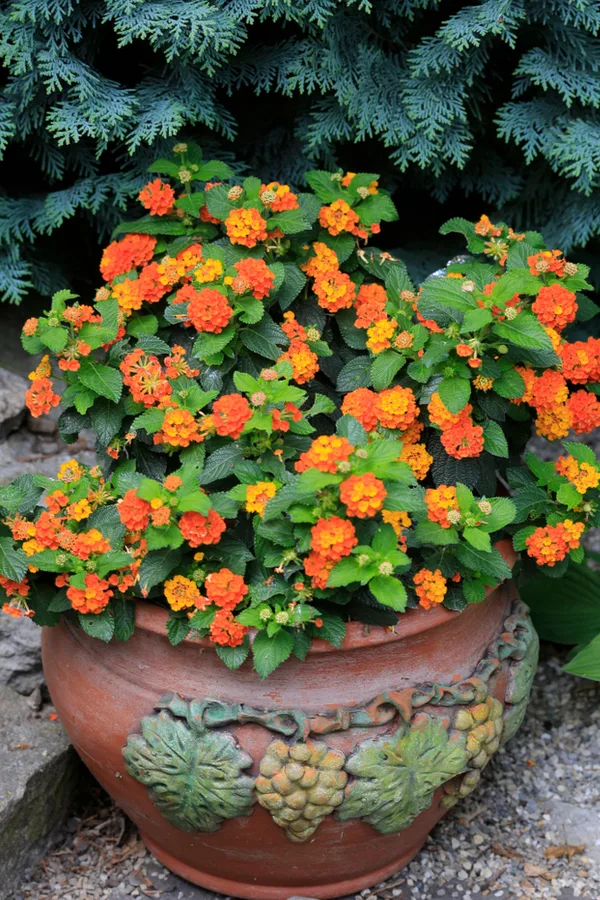
Lantana require very little maintenance for proper blooming. Even better, is rarely bothered by pests. Just two more striking reasons this plant is a perfect choice to beautify your landscape in the summer months. With that in mind, here is an in-depth look at Lantana, including how to keep it flowering all season long!
Growing Lantana
Lantana Varieties and Colors:
The most striking trait of this flower species is that every bloom generally features multiple hues of vibrant flowers. Measuring between one to two inches in size (across), the flowers of Lantana are arranged in the form of a sphere. Together, they create an illusion of kaleidoscopic colors.
The different shades of Lantana blooms can include orange, lavender, white, gold, red, pink, and rose. Belonging to the Verbenaceae family, more than 150 different species are dedicated to this particular plant.
Lantana’s tubular flowers are formed in clusters, and provide optimal blooming conditions that can last from the later part of spring all the way up to early frost season.
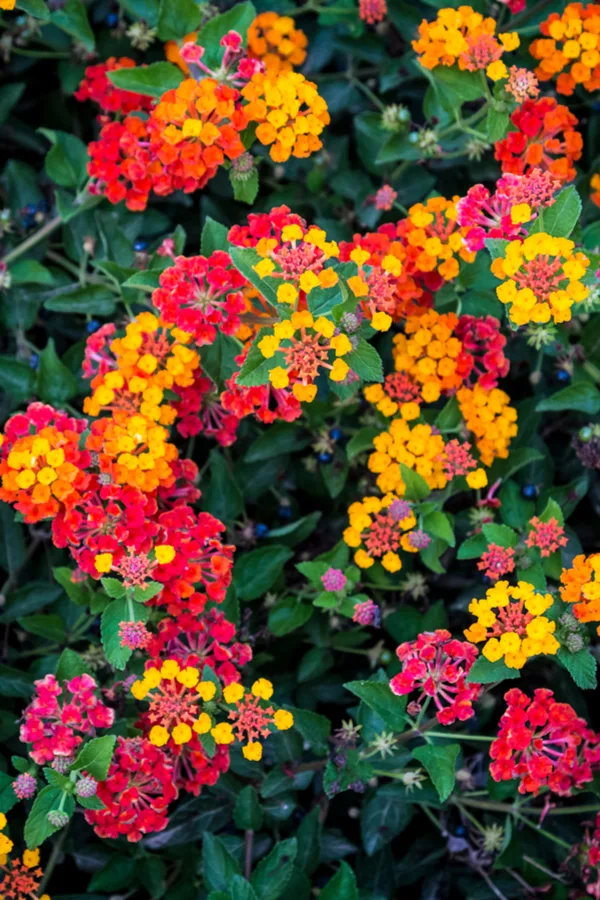
Planting and Watering – Growing Lantana To Keep It Blooming Big
As an annual plant, Lantana requires minimal care while planting. There are 5 main factors you have to cater to when planting Lantana for success – whether directly in flowerbeds, or in pots, containers and baskets:
- soil drainage
- lighting
- watering
- fertilizing
- deadheading
Drainage
When grown annually, it is imperative to avoid wet or soggy soil. This invites problems such as plant disease and rotting of the roots. When planting in containers, this can be avoided simply by using a good quality potting soil that is loose and friable.
However, when planting directly into bed spaces, amend the soil prior to planting with plenty of compost. Not only will the compost provide nutrients for the plant, it will also help to loosen the soil and improve drainage.

If you happen to have exceptionally heavy or clay like soil, you can also amend with a bit of sand and perlite. The sand will help to drain the water away quickly while perlite will help to keep the soil from clogging together.
Lighting
One of the most pivotal keys to keep your Lantana blooming is giving it enough light. To provide maximum blooming potential, be sure you locate your plants in an area that receives at least six to eight hours of direct sunlight each day.
You need not worry about the heat factor as Lantana can handle the sun’s hot rays. In fact, it can handle heat far better than cold. Cold, damp conditions can lead to low blooming and disease issues for the plant. When growing in containers, bring plants indoors if low temps (below 50 degrees Fahrenheit) are in the forecast.
Watering
With Lantana, over watering is more of an issue that under watering. Do not water the plant every day as it may lead to excessive moisture in the soil. Water only to ensure that the root ball along with surrounding area is moist. Be sure to allow the soil to dry out between waterings.
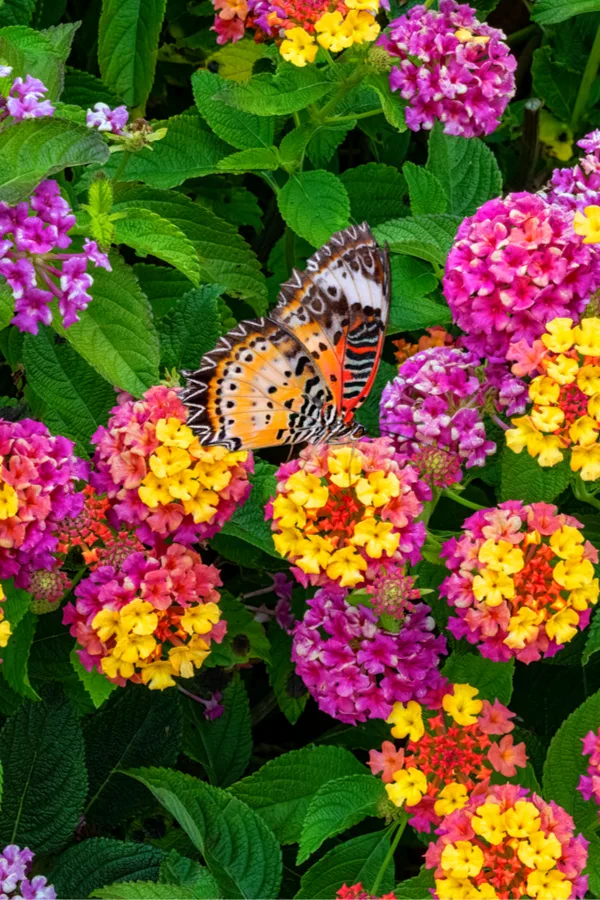
Lantana growing in containers and baskets will require more watering than those directly growing in beds. But with that said, be careful of providing too much. It is better to soak the plant through every few days when watering than providing just a little water every day.
Fertilizing Lantana:
It is a bit surprising to know that fertilizing is not a major player in keeping your Lantana blooming. In fact, in many cases, it is too much fertilizer that can keep Lantana from blooming more. When the soil is too rich, plants tend to focus their energy on foliage growth in place of producing blooms.
For plants growing in flowerbeds, apply a light all purpose 10-10-10 fertilizer to plants in the early spring, and again in late summer. This is more than enough to provide the necessary nutrients for proper blooming.
For plants growing in containers, a light fertilization once a month works well. For potted plants, a light dose (half-strength of recommended mixture) of an all-purpose liquid fertilizer is more than enough. Product Link : Burpee AP Organic Fertilizer
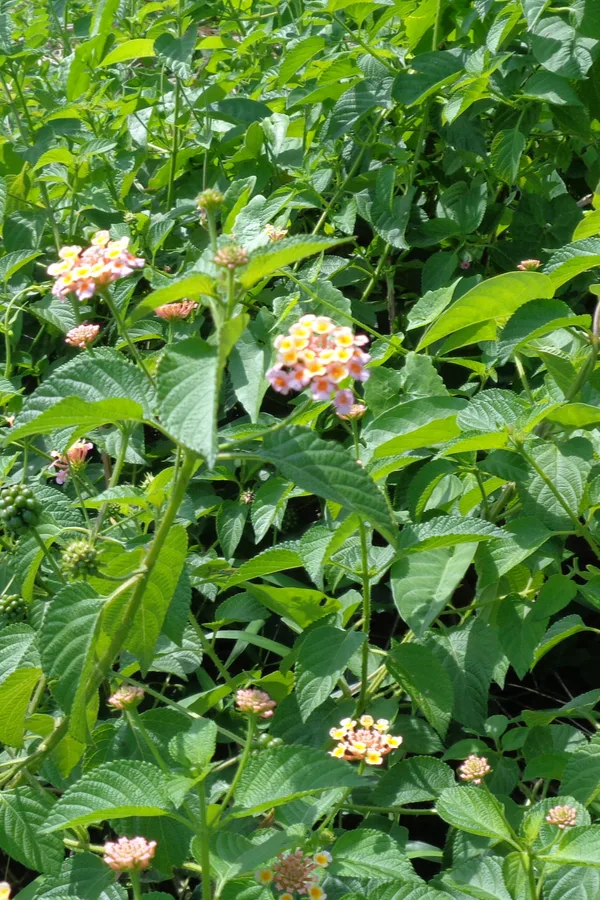
Compost tea is another excellent choice for fertilizing as it provides a good ratio of nutrients without overpowering the plants. Even better, it can be made at home for free from your compost! See: How To Make & Use Homemade Compost Tea
Deadheading:
Finally, one of the most important secrets to keep your Lantana blooms blooming is deadheading your plant regularly. It is an uncomplicated task that works wonders for keeping new blooms coming on again and again.
Generally, any flower cluster in Lantana, when spent, gives way to production of a new seed cluster. All you need to do is observe when the flower cluster of your Lantana has faded, and get rid of this spent flower so that a new bloom head can form more quickly.
Doing this allows the growth of a denser plant as well as heavier blooming. Just make sure that while snipping the flower cluster (spent) you leave the underneath buds unscathed.
Growing Lantana – How To Keep Lantana Blooming All Summer
There are two additional factors that can cause lower bloom yields. The first has to do with the variety of plant you are growing, while the second is your soil’s PH. Here is a look at each, starting with making sure you are growing a non-sterile version of the plant.
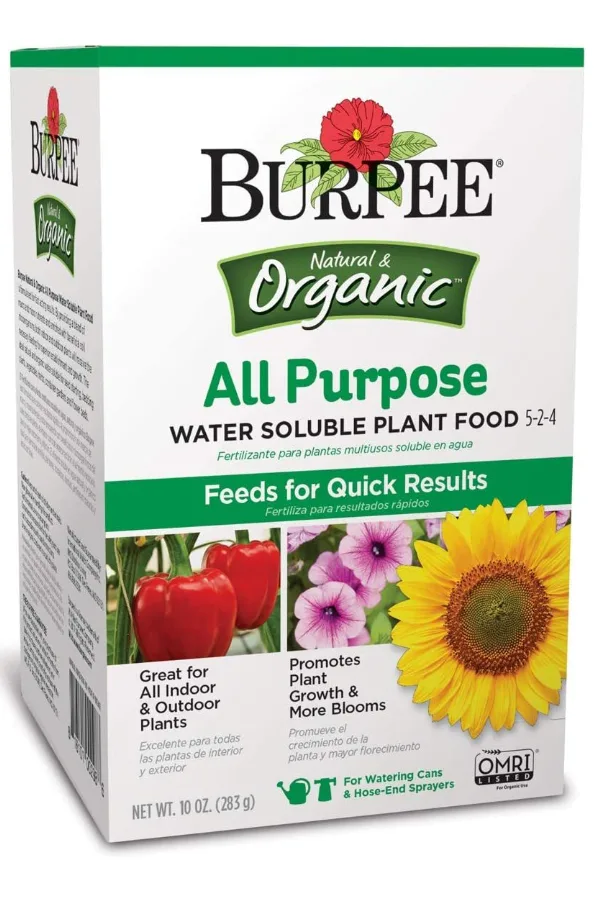
Non-sterile varieties will produce berries, and that usually leads to poor blooming. The cultivars with fruits ( the fruits are inedible) can and will lower the blooming capacity of the Lantana. A few varieties of sterile cultivars that you can use include Samantha, Mozelle, Miss Huff, New Gold,’ and Weeping Lavender. All of these varieties will bloom reliably all through the summertime.
Check Your PH
Lastly, although it is rare, the PH of the soil can affect blooms as well. Lantana will grow in most soil types without an issue. However, the species does bloom well when growing in soil that is slightly more acidic in nature. The pH level of the soil should fall somewhere in the 5.5-6.5 range for best results.
Most all purpose potting soils are more than fine to use when planting in pots, but you can add a bit of acid soil enhancer to the mix to help lower the level a notch. The same can be used when planting directly into flowerbeds with more alkaline soils as well.
You can use a pH probe to test your soil’s pH level. It is important to mention again that Lantana will grow in nearly any soil-makeup, but will simply perform best when it is slightly acidic. Here is to planting and growing Lantana in your landscape this year, and to keeping it blooming bright and beautiful all season long!
Follow Our Facebook Page For Great Gardening Tips And Advice! This Is My Garden Facebook Page
This Is My Garden is a garden website created by gardeners, for gardeners. Jim and Mary Competti have been writing gardening, DIY and recipe articles and books and speaking for over 15 years from their 46 acre Ohio farm. They publish three articles every week, 52 weeks a year. Sign up today to follow via email, or follow along!

